KCC Dual Credit Aviation Courses Prepare High School Students for Flight
This article was written by Lacey Jarrell (Klamath Community College) and published on June 2nd, 2019
Fifteen-year-old Ceasar Rodriguez said it wasn’t until his family moved to Central Oregon that he contemplated whether flying could be in his future.
Rodriguez moved with his family from San Jose, Calif., to Sisters about three years ago.
“We didn’t have [aviation] classes there,” he said. “When I was setting up my classes for ninth grade, one of the things I saw was intro to aviation. I thought that could be fun so I took it. It was one of the most fun classes I’ve taken since I’ve been here.”
Rodriguez, now a sophomore at Sisters High School, is currently enrolled in private pilot preparation, a yearlong course taught by instructor Sheryl Yeager, who has more than 25 years of experience as a flight instructor.
The aviation courses at Sisters High School are offered as dual credit college-level courses through Klamath Community College.
According to Yeager, Sisters High School is the only high school in the U.S. that has all the components her aviation students have access to. She explained that in addition to in-class activities that teach students the nuts and bolts of navigating the skies, students can log flight hours using a Federal Aviation Administration-certified flight simulator, and thanks to a partnership with Outlaw Aviation, the students can log flight time in the pilot seat, as well.
“We have kids that have moved here from Hawaii to be part of this program. We have one student who has driven from Bend to Sisters every day to take this course,” Yeager said. “He’ll have his private license before he graduates high school, as well.”
Yeager explained that earning a private pilot license does not mean license holders can go straight into the workforce, but it does prepare students to enroll in an advanced aviation program, such as the program at Klamath Community College. She said for students who pass private pilot preparation and earn a pilot’s license, the sky’s the limit.
“If they go to any college that has a flight program, they are going in with a private license, which will cut back a lot of the cost and time to complete a degree,” Yeager said.
Preparing for flight
Yeager said her aviation courses are open to high school students of all ages; the only requirement is that students who want to pursue a private pilot license must first pass intro to aviation, where they study a host of subjects ranging from basic aviation history to aerodynamics.
“There’s a lot to learn that you wouldn’t even begin to imagine,” Yeager said. “There are no road signs in the sky. You can’t just pull over to the side of the road if you have a problem, but it’s a heck of a lot more fun than driving.”
Earning a private pilot license takes three steps: passing a 60-question written test and logging at least 40 hours of flight time; completing an oral exam; then, passing a “check ride” while flying.
To prepare for the flight portion of the certification, students enrolled in Yeager’s private pilot course must practice cross-country flight planning. The exercise consists of completely planning a flight using old-school tools, such as a paper map and a paper flight computer.
“There’s a lot to it,” Yeager explained, noting that students must account for everything — weather, wind, weight, balance of their airplane, and much more.
“They get really frustrated with me because in today’s world, a computer or phone will figure it all out in three seconds,” Yeager said. “The exercise starts out with them ‘in the pilot seat’ and they have to figure out which way to go when they take off, what to do when the wind starts blowing them off course, and what landmarks they will use to stay on track.
“We had someone flying a cross-country trip before she had her private license — she had two iPads to work with — and all of the sudden the GPS was gone. She called the Seattle center and was told all the GPS on the West Coast was out,” Yeager said.
“They need to know this stuff.”
Flying into the future
Yeager said many of her students are already flying and have plans to become professional pilots.
“One of my students loves fly fishing and wants to be a guide in Alaska with his own float plane, flying a commercial business guiding people,” she said.
Seventeen-year-old George Chladek said he fell in love with flying a few years ago when a neighbor took him flying in a Beechcraft Musketeer. Now, he has logged more than 35 flight hours, including 10 solo hours.
“I really like flying, and it’s a really good career,” Chladek said, who plans to work as a flight instructor to earn hours to put toward a commercial pilot license.
“I would definitely take the class if you’re interested in aviation, even if you don’t want to be a pilot. You learn a lot about it,” he added.
Rodriguez said he’s thinking about a career in nursing, but values the challenges aviation presents in the classroom. To other students considering aviation courses, even if they don’t yet know their final destination, Rodriquez advises: “I say take the class. It could help you in the long run, in any career you have to use complex ideas.”







